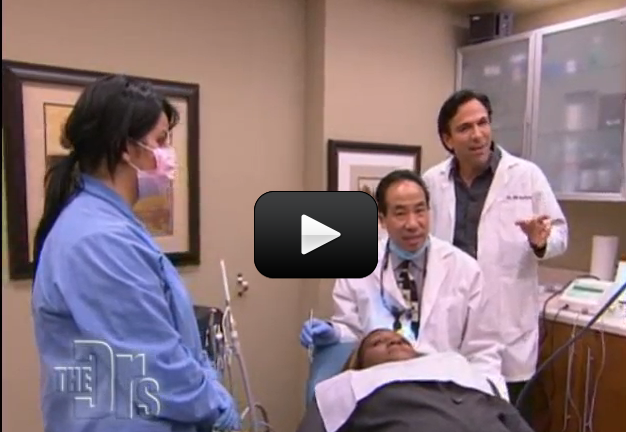Digestion involves the breakdown of what we consume into nutrients. The first step is mechanical digestion—chewing. After we mechanically break down the food with our teeth, we begin chemical digestion.
Teeth are small structures found in the mouths of vertebrates. They are calcified, meaning that they contain the element calcium, and are very distinctive based on the type of animal they are found in. Carnivores, or animals that eat meat, have sharp, pointy teeth for ripping and tearing prey. Plant-eating animals, known as herbivores, have larger flat teeth which they use to grind up the tough plant material they eat. Other animals, referred to as omnivores or generalists, eat both plant and animal material. As you might expect, these animals have both types of teeth. Humans fall into this category.
Humans and all other mammals are diphyodont, meaning we will have two sets of teeth in our lifetimes. Not all animals are this way. In fact, rodents and sharks both will continue to grow set after set of new teeth as they gnaw or bite their food. Other animals only have one set of teeth throughout their entire life.
In humans, the front teeth are called incisors. Next to the incisors are the sharp canines. To see how these two types of teeth are used, try a mini-experiment. Take a bite out of a banana and then take a bite of a carrot. Chew them as you would normally, and pay careful attention to what tooth is being used to chew. You’ll notice that for the softer banana, the incisors take the first bites. With the harder carrot, the canines do this job. In both cases, the chewing is done by the pre-molars, which are the teeth next to the canines, and the molars, the large, flat teeth closest to the back of your mouth.
Taking care of your teeth is very important. Brushing your teeth after every meal and flossing every day can go a long way in making sure your teeth stay healthy. If you don’t brush and floss, bacteria can build up over time, leading tartar and plaque on your teeth. If this continues, a small hole, or cavity, can form. Dentists can fill cavities, but this is generally something to be avoided if possible. Your gums can also become infected with bacteria if they are not cleaned. Bleeding gums can be one sign of gum disease. Serious dental procedures, such as extraction (the removal of a tooth) or a root canal are sometimes needed when dental care has been ignored for too long. The best thing to do is to avoid the problem to begin with by brushing, flossing, and visiting a dentist regularly.


cool thanks for the information.
They can if it’s significantly stressful for the patient to have a root canal treatment. It’s not without risk, so they prefer not to unless the benefits far outweigh the risk.
Hi Aurora its Kaden Kruid, I sure hope that I never have to get a root canal, but do you know why they don’t just put people under with the knock out gas?